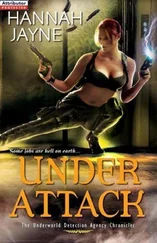a personally conducted tour of the famous Tilbury shelter, a great honour I gathered, as Lady Astor [MP for Plymouth Sutton] had been down a few nights ago and [the District Warden] refused to take her round. He said he was tired of West-Enders getting an evening’s entertainment sightseeing in East End shelters. I should hardly call it ‘amusement’ but I could sympathise with him as he is very busy. Anyway the people resent being exhibited to sightseers.
… They have reduced the numbers in Tilbury shelter from 12,000 to about 6,000 and made some improvements, though it is still very bad and many people sleep on the stones. It is a strange place, vast and very confusing as there are many parts to it. Most of it is under railway arches and there are trucks and sidings in it too. People have been known to park their baby’s pram in a truck, and found it gone to Birmingham or somewhere in the morning!
The District Warden is full of ideas and hopes the war will last long enough to get hot water laid on and proper feeding. It will have to last a long time at the present rate!
Ritchie Calder had greatly exaggerated the number of people taking refuge in the Tilbury shelter, as he had inflated the number killed in the bombing of South Hallsville School. He did so because, as a campaigning journalist, he had an urgent agenda. In his view the government was culpably negligent of the safety of its citizens – particularly its poorest citizens, who had not the resources to make their own arrangements. What Londoners (and indeed all those living in vulnerable areas) required were deep shelters. And these the government had consistently refused to provide.
The scientist Professor J.B.S. Haldane had paid three visits to Spain during the Civil War, which had made him something of an authority on defence against air raids – particularly since most British scientists were still using data from the First World War to frame their expectations of Second World War bombing. Haldane had spent weeks in Madrid and Barcelona (where there was ‘an extensive system of underground refuges … capable of accommodating altogether about 350,000 people’, according to the city’s mayor) gathering information and making statistical calculations, and what he discovered made him a passionate advocate of deep shelters. While he was not himself a member of the Communist Party – though he was a Marxist, and was the science correspondent for the CP newspaper, the Daily Worker – this was a campaign supported, indeed often led, by members of the Communist Party of Great Britain (CPGB), who argued that it would be the working classes living in poorly-built accommodation, clustered around inevitable targets such as docks and factories, who would take the brunt of German aerial attacks. What some might call governmental incompetence in failing to make proper provision, the CPGB regarded as a conspiracy against the workers in a class war that made them in effect the ‘poor bloody infantry’ of the home front.
Haldane argued that gas was no longer the main danger – he was an expert on poison gas and had designed a gas mask during the First World War – but that the real threat came from high-explosive bombs. He believed that the government policy of dispersing the population into reinforced basements, surface and Anderson shelters, rather than constructing networks of mass underground shelters, was misguided, irresponsible and penny-pinching. In October 1938 he published a paper in the scientific journal Nature in which he demonstrated mathematically that there were no grounds for assuming that bombs dropped at random would cause fewer casualties if people were dispersed than if they were concentrated. Later that year his book, called simply ARP , was published by Victor Gollancz, founder of the Left Book Club. It advocated a two-year programme of excavating sixty feet under London to build 780 miles of seven-foot tunnels that could hold the 4.4 million population of the LCC area. These should be built of brick rather than concrete, since in Haldane’s view ‘The concrete industry is now in the grip of monopoly capitalism, and for this reason prices are likely to be higher relative to brick than would otherwise be the case.’ Following the book’s publication Haldane stumped the country speaking, usually on CP platforms, and writing articles for the Daily Worker demanding better protection for the British public against the blitz. He argued that some of Britain’s unemployed – of whom there were still 1,800,000 in the summer of 1939 – could be given work constructing the deep shelters he believed were required, a scheme he costed at an estimated £12 for each person who would be able to take refuge in them.
The Architect and Building News had voiced its readers’ concerns in October 1938, just after the Munich crisis, about ‘sandbagged basements … half finished trenches in the parks and squares … uncomfortable reminders of the ludicrous inadequacy of the eleventh-hour scramble of three weeks ago’, and demanded, ‘What is being done?’ That same month Finsbury Borough Council, in charge of one of the poorest boroughs in London, provided an ambitious answer. On 4 October Alderman Riley, Chairman of the Finsbury ARP Committee, recommended that the modernist émigré architect Berthold Lubetkin and his firm Tecton, which had designed Finsbury’s vanguard Health Centre, opened earlier that year, should be asked to come up with a solution to protecting ‘the whole of the population [of Finsbury] in the event of war’. Lubetkin and the civil engineer Ove Arup (who had proved so valuable in solving the construction problems of the Penguin Pool at London Zoo, designed by Tecton in 1934) worked out a ‘danger volume’ to measure scientifically the comparative protection afforded by different types of shelter, and came up with a plan for fifteen shelters (each housing between 7,600 and 12,700 people) deep underground, approached by spiral staircases that would permit everyone to be safely ensconced within the seven minutes it was reckoned would elapse between the alert sounding and the first bombs falling.
Although Arup greatly exaggerated the night-time population of the borough who would require shelter, it was an elegant solution to stowing the 58,000-odd residents of Finsbury plus essential services deep underground at the cost of ten guineas a head – a sort of Maginot Line of the air war. Finsbury Council organised an exhibition in the Town Hall to show how it would work, complete with chilling illustrations by Gordon Cullen (whose murals adorned the Health Centre) showing the frailty of other forms of protection, and on 15 February 1939 Lubetkin appeared on the infant medium of television to demonstrate the plan’s virtues. But the Home Secretary Sir John Anderson, to whom the plans had to be submitted, prevaricated, waiting for the recommendations of a group of experts including engineers and trade unionists; their White Paper, ‘Air Raid Shelters’, was finally published in April 1939. Winston Churchill, to whom Tecton had also sent a copy, was not ‘favourably impressed … it appears to be inspired by the wish to exaggerate the danger of air attack and to emphasise the futility of basement protection in the interest of some particular scheme in which you are associated. The wide circulation of such a book would not be helpful at the present juncture.’
On 18 April 1939 Tecton/Finsbury’s scheme was rejected on the grounds of impracticality – experience of building the London Underground indicated that it would take at least two years to build – of cost, shortage of materials, accessibility – it was reckoned that people would need to be within 150 yards of a shelter to get to it through congested streets in sufficient time – and of the fact that the plans were fundamentally opposed to the principle of dispersal. However, in the autumn of 1940 the government changed its mind, ostensibly for technical reasons, since German bombs were getting heavier. Herbert Morrison announced in an upbeat broadcast, ‘We Have Won the First Round’, that a limited number of deep shelters would be provided in the London region by tunnelling under the tube system at selected stations. But, he insisted, ‘It is quite certain that deep shelters cannot play more than a limited part in our plans … anything like a universal policy of deep shelters for the whole people or the greater part of it, is beyond the bounds of practical possibility.’ Morrison, who had been implacably anti-Communist as leader of the LCC, then launched an astonishing attack on Haldane (without naming him) and other deep-shelter campaigners for being ‘political schemers’ engaging in ‘defeatist agitation’. He accused them of seeking ‘to destroy our will to take risks in freedom’s cause’, and of ‘playing Hitler’s game’: ‘These people are not numerous, but they are mischievous; Hitler is no doubt delighted with their manoeuvres. He knows that if our people could be stampeded into putting a narrow personal safety before success, he would win.’
Читать дальше












